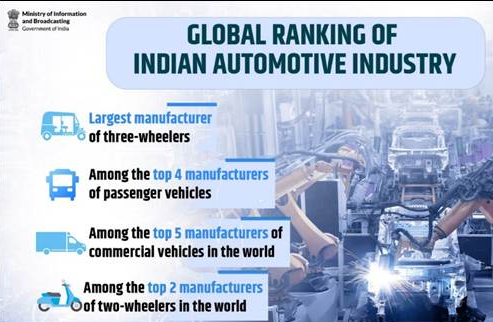GS – III - Economy, Infrastructure & Energy
GS – II – Government policies & Initiatives for development of various sectors
Having completed 10 years, the Make in India initiative has significantly transformed India's automobile industry, fostering domestic car production and accelerating electric vehicle (EV) manufacturing.

|
Status of auto component industry |
|
Indian Government has set a target to reach the $100 billion export target in auto component by 2030
|
Make in India |
|
The China Plus One (C+1) strategy is a supply chain strategy where companies diversify manufacturing activities away from China to reduce risks.
|
Initiatives by other ministries |
|
|
Ministry of Power |
|
|
Ministry of Finance |
|
|
Ministry of Road Transport & Highways (MoRTH) |
|
|
Ministry of Housing and Urban Affairs |
|
Interoperable EV charging networks enable EVs to charge at any station, regardless of the network operator